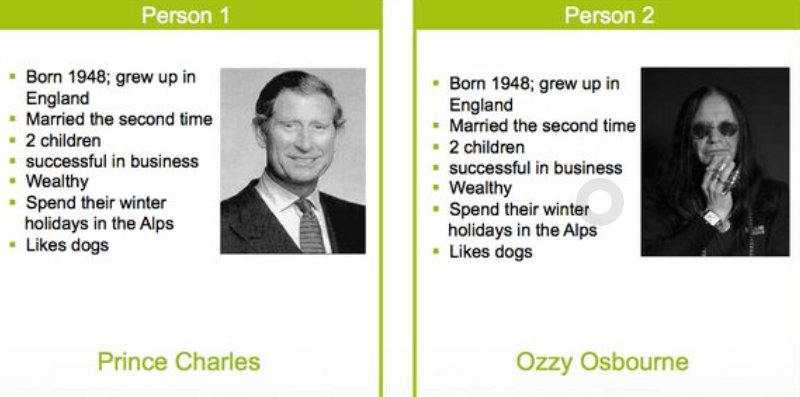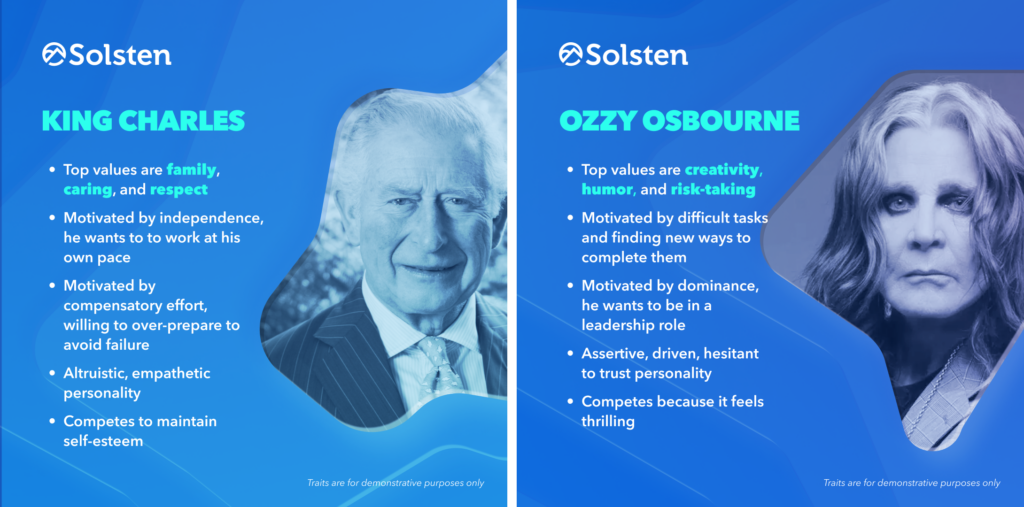To say player personas have become an important game development tool is an understatement.
In the past you might have used personas to gain an advantage over your competition. Now, you use personas to increase the likelihood of your game being released.
Video game studios started to experiment with personas over 20 years ago. They were largely made up of demographic data such as age, gender, and geographic location. Game studios used this information to form fictional characters that represented typical segments of their audience.
One early example of this is the Bartle taxonomy of player types, created in 1996. This early form of gamer classification grouped players into four types — Achievers, Explorers, Socializers, and Killers — based on their in-game behaviors.
While the Bartle taxonomy was used by game developers to specify game features, its novelty far outlived its usefulness; there are a lot more than four types of humans on this planet.
Ten years later, studios started wondering two things: are personas worth the effort, and can they be incorporated to drive meaningful outcomes.
The jury is back on those questions. We now know that using the right personas can result in an ROI increase of up to 400%.
With their importance established, a number of sources offering many different types of personas have emerged.
In 2025, the question is no longer how to incorporate personas into your game development. It’s which kind of personas you should work with.
Picking the right one can deliver immense outcomes, but picking the wrong one puts you at a strategic disadvantage.
Skip the templates and create real-time player personas instantly
Instead of filling out static templates, ask Elaris: “What are the psychological profiles of RPG players?” or “How do mobile puzzle gamers differ from PC strategy players?” Get advanced player personas based on real psychological data from millions of players.
Player Personas Are Now Essential
It’s important to understand what sets the different types of gaming personas apart. But first, one needs to understand why they’ve become an essential part of game design and development in the first place.
It all comes down to wanting to create a “good game.”
Of course, everyone wants to create a good game. But people have different ideas of what a good game is or should be. In game development, it’s the smallest misalignments that can send things off the rails. They build over time, and little feature creeps amount to late-stage crunch or disjointed strategies.
Here are some recent examples we’ve seen:
- Marketing campaigns that get high amounts of installs at low CPIs, but don’t actually acquire the ideal target audience for your game from a revenue perspective.
- FTUEs that don’t seamlessly nurture the optimal players for their game into an expected first time user experience.
- An undefined strategy that leaves the team chasing competitors’ design ideas.
- Late-stage roadmap reworking based on what an executive now says is the game’s most important feature.
The way to avoid these issues is to take a truly player-centric approach to game development.
Taking a Player-Centric Approach to Game Development
What do your current or future players want? Why do they play games? What are their favorite games? What will delight, inspire, entertain, and retain them?
Having detailed answers to these questions is the best way to get an entire studio into alignment. But a player-first approach comes with its own set of challenges.
Teams may agree to focus on the player, but have a limited understanding of their target audience. There may be gaps in the available player information. And teams may have different assumptions about the target audience’s needs, preferences, and motivations. All this can lead to crossed wires.
This is where creating personas come into play. Personas give studios a tangible way to take a player-first approach to game development.
What Are Player Personas?
Player personas represent segments of your current or future audience, based on research and data. They help teams design and market a game to meet customer needs, removing bias from decision making. This leads to faster and clearer decision making, using customer needs as the guiding star.
With personas, every team across your organization understands who will buy, play, and enjoy your game.
Decisions can be objectively made by separating personal opinions from the needs and desires of their target audiences.
This doesn’t mean people can’t apply their own expertise. It focuses their expertise on the things that matter to the player — and that impact the game’s commercial success.
Types of Player Personas: From Proto to Advanced
As the gaming industry has evolved, so have the types of player personas used by developers. These personas range from basic, assumption-based models to highly sophisticated, data-driven profiles. Let’s explore this spectrum, starting with the most fundamental type: proto personas.
Understanding Proto Personas
Some studios begin by creating proto personas. These are basic representations of a game’s target audience, constructed based on stakeholder assumptions. They’re a “best guess” at who your gaming audience is.
These gaming personas can get a team moving quickly since they don’t involve research or data. Teams can start the design and development process promptly, without becoming bogged down with the intricacies of user behavior.
There is usefulness in proto personas, especially when the stakeholders have decades of industry experience under their belts.
However, they are a subjective tool. They may align development and marketing, but can easily steer them in the wrong direction as well. Because of this lack of certainty, proto personas can wind up consuming a lot of time, and lead to a lot of false starts.
Understanding Demographic and Behavior-Based Personas
Many studios begin by building demographic and behavior-based personas out of their current player data.
There are a number of existing models this data can be applied to. These include Nick Yee’s quantic gamer types and GameRefinery’s gamer archetypes.
These personas include demographic variables like age, sex, and location, and can be enriched with behavioral data. This information is seemingly robust, and can lead to some detailed gaming personas.
But while these personas may appear thorough, they are famously skin deep. This viral graphic illustrates why:

What seems detailed on a first glance becomes meaningless once you go past the surface. And these player personas can actually become dangerous to rely on. If you design for British royalty when your players are actually British metal heads, it can be a disaster.
But the dangers extend beyond that.
Demographics and extrinsic motivators change over time, and behaviors can change based on context. The way a player acts in one game is often completely different in another game.
For example, a player might be labeled a “completionist” in one game, but not be completing tasks in others. What’s behind this discrepancy in behavior? The reason is that labeling someone a “completionist” doesn’t get to the “why” behind their behavior. These players might be completing tasks in one game for an entirely different reason — because of the status that comes with climbing a leader board.
However, assuming all “completionists” also crave status would be a flawed conclusion to draw. Many high value users in audiences are equally low on status orientation.
The lesson here is that behaviors are an outcome, not a reason. They are good representations of the past and present, but don’t tell you what players will do or want in the future.
For large studios who can afford a user research team, this type of persona work can be enriched with focus groups and self-report surveys like the Myers-Briggs Type Indicator. Here, studios look at the pain points and expressed wants and needs of their target audience.
This sounds good in theory, but in practice these personas run into a formidable foe: human nature. What people say they want can vary dramatically from what they actually want, and people are famously bad at knowing what they actually need.
For example, we’ve consistently seen the largest self-reported pain point in the F2P space is: “not having to pay to win.” OK, how does that “want” help a studio design a better game that will drive ROI?
An audience may not want to spend money, but find out what they actually need, and you’ll be on the path to sustainable monetization.
At the end of the day, you’re left to guess how any of the features you implement will impact your KPIs, either positively or negatively.
This is why personas made off of behavioral models, existing motivation frameworks, and self-reported tools repeatedly lead to suboptimal outcomes.
Unlock Engagement With Advanced Player Personas
Advanced player personas go far beyond demographics, interests, and behaviors. They reveal the deepest aspects of player psychology and cluster an audience based on the enduring traits they have most in common.
These player personas are built on data that is packaged into digestible and actionable insights. Tools like Elaris make these insights accessible in real-time through natural conversation, letting you explore player psychology instantly without research teams or lengthy surveys.
Curious what psychological insights like this reveal about your specific audience? Elaris can analyze any gaming demographic instantly. Explore now.
Advanced Player Personas in Action
How does this look in practice? Let’s take another look at our two British dog lovers to see how their personas might expand if they incorporated psychology.

King Charles places a high value on generosity, feeling heard, and being reliable. He is motivated by his desire for independence, since he likes to work at his own pace. He’s also motivated by compensatory effort, and status orientation. He has an assertive yet impulsive personality. However, he also competes in order to maintain his self-esteem.
Ozzy, on the other hand, values creativity, transformation, and humor above all else. He is compelled by difficult tasks and finding new ways to complete them. Additionally, he is motivated by flow states and independence. While he is altruistic, he can also be fantastical. He primarily competes because it feels thrilling.
Now, imagine if you had this kind of information for your entire player base.
What can advanced player personas like this unlock? Here are just a few examples:
- Designers can use them to craft the right game mechanics to improve retention and engagement.
- Product Management can use them to prioritize features and decrease time to market.
- Marketing can use them for creative optimization, crafting the right message and ad creative to optimize conversion and ROAS.
- Leadership can use them as a framework for game feedback to their teams.
Whether you’re building a new game or evolving a live game, the actions you can take with advanced player personas are invaluable. Teams can align around the mission of player-centricity, with biases and assumptions removed. Decisions are made confidently, guesswork is eliminated from the development process, and most importantly, games are created, launched, and enjoyed.
Want psychological insights like this for your game’s audience?
The detailed psychological profiles you just saw aren’t hypothetical, they’re the type of insights Elaris provides instantly. Ask about any gaming audience: “What motivates battle royale players?” “How do female mobile gamers differ psychologically from male gamers?” “What personality traits predict high LTV in puzzle games?”
No research teams, no surveys, no guesswork. Just instant psychological insights from the world’s largest gaming psychology database.
Discover your players’ psychology
Conclusion
But understanding the power of player personas is just the beginning. The real magic happens when you put this knowledge into action.
From personas to psychology, discover what really drives your players
Templates give you a framework, but Elaris gives you the actual psychological insights to fill it with meaning. Start free and explore the psychological traits, motivations, and values of any gaming audience through simple conversation.
Stop guessing what your players want. Start understanding why they want it.



